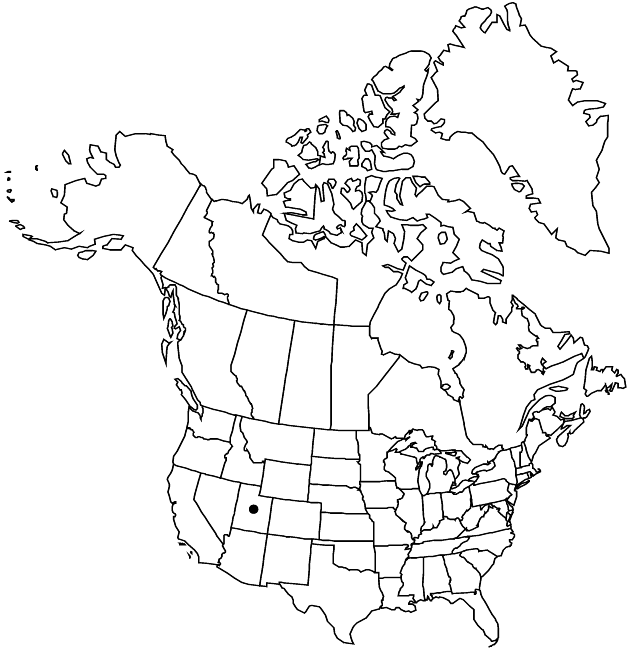Difference between revisions of "Erigeron canaani"
Great Basin Naturalist 43: 366. 1983.
FNA>Volume Importer |
imported>Volume Importer |
||
| (5 intermediate revisions by 2 users not shown) | |||
| Line 8: | Line 8: | ||
}} | }} | ||
|common_names=Abajo fleabane | |common_names=Abajo fleabane | ||
| + | |special_status={{Treatment/ID/Special_status | ||
| + | |code=E | ||
| + | |label=Endemic | ||
| + | }} | ||
|basionyms= | |basionyms= | ||
|synonyms={{Treatment/ID/Synonym | |synonyms={{Treatment/ID/Synonym | ||
|name=Erigeron higginsii | |name=Erigeron higginsii | ||
|authority=S. L. Welsh | |authority=S. L. Welsh | ||
| + | |rank=species | ||
}} | }} | ||
|hierarchy=Asteraceae;Asteraceae tribe Astereae;Erigeron;Erigeron canaani | |hierarchy=Asteraceae;Asteraceae tribe Astereae;Erigeron;Erigeron canaani | ||
| Line 36: | Line 41: | ||
-->{{#Taxon: | -->{{#Taxon: | ||
name=Erigeron canaani | name=Erigeron canaani | ||
| − | |||
|authority=S. L. Welsh | |authority=S. L. Welsh | ||
|rank=species | |rank=species | ||
| Line 50: | Line 54: | ||
|publication title=Great Basin Naturalist | |publication title=Great Basin Naturalist | ||
|publication year=1983 | |publication year=1983 | ||
| − | |special status= | + | |special status=Endemic |
| − | |source xml=https:// | + | |source xml=https://bitbucket.org/aafc-mbb/fna-data-curation/src/2e0870ddd59836b60bcf96646a41e87ea5a5943a/coarse_grained_fna_xml/V19-20-21/V20_575.xml |
|tribe=Asteraceae tribe Astereae | |tribe=Asteraceae tribe Astereae | ||
|genus=Erigeron | |genus=Erigeron | ||
Latest revision as of 20:04, 5 November 2020
Perennials, (5–)10–25(–30) cm; taprooted, caudices simple or branched. Stems ascending to decumbent or nearly prostrate, sparsely strigose to glabrate, eglandular. Leaves basal (persistent, old leaf bases persistent, chaffy, fibrous) and cauline; basal blades linear to narrowly linear-oblanceolate, 50–150 × 1–2(–3) mm, cauline gradually or abruptly reduced distally, margins entire, faces glabrate to sparsely strigose, eglandular. Heads 1(–3). Involucres 5–7 × 10–13 mm. Phyllaries in 2–3(–4) series, hirsute, minutely glandular. Ray florets 15–22; corollas white to purplish, 3.5–6 mm, laminae not coiling or reflexing. Disc corollas 3.5–5 mm. Cypselae 1.8–2.2 mm, 2-nerved, faces sparsely strigose; pappi: outer of setae, inner of ca. 20 bristles.
Phenology: Flowering Apr–Jun(–Jul).
Habitat: Crevices of sandstone cliffs and in sandy soil, ponderosa pine, Gambel oak, maple, Douglas fir, mixed conifers
Elevation: 1600–2600 m
Discussion
Erigeron higginsii may prove to be a distinct entity. It was described as differing from E. canaani in having smaller involucres (4.5–5.5 × 7.5–11 mm) with fewer rays (7–12); it occurs at 2900–3120 m in the Pine Valley Mountains of southwestern Utah.
Selected References
None.
